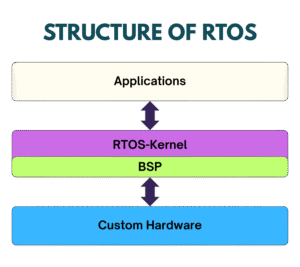The Linux kernel has long been a cornerstone of operating systems across diverse environments, from enterprise servers to embedded systems. While its robust design and modularity make it versatile, the standard Linux kernel is not inherently designed for real-time operations. To transform the Linux kernel into a real-time operating system (RTOS), developers must focus on latency reduction, deterministic behavior, and the prioritization of time-critical tasks. This article delves into the steps, challenges, and strategies to upgrade the Linux kernel for real-time operations.
Understanding Real-Time Systems
Real-time systems are designed to perform tasks within specific time constraints, ensuring predictable responses to external events. Such systems are categorized into:
Hard Real-Time Systems:
These systems are characterized by strict deadlines. Missing a deadline can lead to catastrophic consequences, such as system failure or harm to users. Examples include avionics systems, pacemakers, and industrial robotic controllers.
Soft Real-Time Systems:
In these systems, missing a deadline does not cause failure but may lead to degraded performance. Examples include multimedia streaming, where delayed frames result in a drop in quality, but the system continues functioning.
The Linux kernel, in its default state, is not suitable for hard real-time requirements due to its non-deterministic scheduling and interrupt handling mechanisms. However, with careful modifications, it can be adapted for soft real-time and, in some cases, even hard real-time tasks.
Benefits of Real-Time Linux in Embedded Systems
Adapting Linux for real-time operations offers several advantages:
Cost-effectiveness:
Using Linux eliminates the need for expensive proprietary real-time operating systems (RTOS) since Linux is open source.
Flexibility:
Linux supports a wide variety of hardware platforms, from embedded systems to high-performance servers. This flexibility makes it adaptable to diverse real-time use cases.
Community Support:
The Linux community is vast and active, offering a wealth of resources, forums, and contributions to help resolve issues and improve real-time capabilities.
Integration:
A real-time capable Linux kernel can be integrated into existing systems, reducing the need for separate RTOS deployments.
Key Components of Real-Time Linux
To achieve real-time capabilities, modifications focus on three primary areas:
Preemptive Kernel:
The kernel is made preemptive by allowing higher-priority tasks to interrupt lower-priority ones, ensuring quicker response times to critical events.
Deterministic Scheduling:
The scheduler is optimized to execute tasks based on their priority and deadlines, rather than their arrival order, ensuring predictability in task execution.
Real-Time Patches:
Patches like the PREEMPT_RT patch introduce enhancements to make the kernel suitable for real-time operations, such as converting spinlocks to preemptible mutexes and moving interrupt handling into kernel threads.

Step-by-Step Guide to Enable Real-Time Linux With PREEMPT_RT
Select a Real-Time Patch
The most popular real-time patch for Linux is the PREEMPT_RT patch. This patch modifies the kernel to:
- Replace non-preemptible sections of code with preemptible ones, reducing latency.
- Turn hardware interrupt handlers into kernel threads, ensuring interrupts are handled without delaying other processes.
- Optimize task scheduling for deterministic performance.
To apply the PREEMPT_RT patch:
# Clone the RT patch repository
git clone https://git.kernel.org/pub/scm/linux/kernel/git/rt/linux-rt-devel.git
# Navigate to the desired branch
git checkout stable-rt
Build and Configure the Kernel
After applying the patch, the kernel must be configured for real-time operation. Key configuration steps include:
- Enable Fully Preemptible Kernel (RT):
Navigate to Kernel Features > Preemption Model and select Fully Preemptible Kernel (RT). This option ensures the kernel prioritizes tasks with the highest urgency.
- Enable High Resolution Timer Support:
High-resolution timers provide the precise timing required for real-time operations, ensuring accurate task execution.
- Disable Unnecessary Features:
Turn off features such as frequency scaling and debugging options that may introduce unpredictability or delays.
Build and install the configured kernel:
make -j$(nproc)
make modules_install
make install
Optimize the System for Real-Time
- Disable Non-Essential Services:
Background services like logging and graphical interfaces can interfere with real-time tasks. Use systemctl to disable such services.
- Pin Tasks to Specific CPUs (CPU Isolation):
Real-time tasks should run on isolated CPUs to prevent interference from other tasks. Add isolcpus and nohz_full kernel parameters during boot.
- Optimize Memory Management:
Use tools like mlock or mlockall to lock memory pages in RAM, ensuring they are not swapped to disk.
Test Real-Time Performance
Evaluate the system’s real-time performance using tools like cyclictest, which measures latency under various conditions:
cyclictest -t1 -p99 -n -i100This command evaluates:
- The maximum latency observed.
- The consistency of latency over time.
Adjust Scheduler Parameters
Linux provides real-time scheduling policies such as:
- SCHED_FIFO:
First-in, first-out scheduling for deterministic task execution.
- SCHED_RR:
Similar to FIFO but includes time slices for each task.
Assign these policies to processes using the chrt command:
sudo chrt -f 99 <process_id>Challenges in Real-Time Linux
Latency:
While PREEMPT_RT reduces latency, achieving ultra-low latency requires extensive system tuning and hardware optimization. Real-time workloads often demand predictable timing even under high system load, which can be challenging to achieve consistently.
Hardware Limitations:
Inconsistent support across hardware platforms can complicate real-time deployments. Some hardware components may introduce unpredictable delays, especially if they lack robust driver support.
Power Management:
Disabling features like CPU frequency scaling ensures consistent performance but increases power consumption, which can be a concern for battery-powered or energy-sensitive devices.
Complexity:
Configuring and maintaining a real-time kernel requires expertise, making it less accessible to beginners. The integration process often involves trial and error to achieve optimal results.
Compatibility:
Real-time kernels may not be compatible with certain drivers or software, requiring additional debugging and testing. This can slow down the adoption of real-time Linux in some environment.
Advanced Techniques for Real-Time Optimization
Real-Time Monitoring Tools
Monitor and analyze system performance using tools like:
- trace-cmd:
Captures detailed kernel trace events for performance analysis.
Provides a graphical interface for interpreting kernel traces captured by trace-cmd. This helps identify bottlenecks and optimize the system.
Dynamic Tick (NO_HZ) Mode
Dynamic tick mode reduces timer interrupts on idle CPUs, allowing better performance:
- Enable CONFIG_NO_HZ_FULL in the kernel configuration.
- Specify isolated CPUs in the bootloader using nohz_full. This minimizes interruptions to real-time tasks.
Real-Time Locking Mechanisms
Priority inversion can be mitigated using:
- Priority Inheritance Mutexes:
Prevents lower-priority tasks from blocking higher-priority ones by temporarily raising the priority of the blocking task.
- RT Mutexes:
Enable CONFIG_RT_MUTEXES to ensure robust real-time locking mechanisms, which are critical for maintaining system responsiveness.
Applications of Real-Time Linux
Real-time Linux is widely used in:
- Aerospace Systems:
Enables deterministic control for critical systems like navigation and flight controls. Precision and reliability are essential in this field.
- Robotics:
Facilitates precise control of actuators and real-time sensor integration. Real-time Linux ensures that robots can respond promptly to environmental changes.
Powers programmable logic controllers (PLCs) and ensures timely responses in SCADA systems. Real-time capabilities improve productivity and safety in automated factories.
- Telecommunications:
Manages real-time data routing for reliable communication. This is crucial for maintaining high-quality voice and video transmissions.
- Medical Devices:
Ensures life-critical devices operate with precision and reliability. Real-time Linux is integral to systems like patient monitors and surgical robots.
Future Directions
The integration of real-time capabilities into the mainline Linux kernel continues to evolve. Key areas of focus include:
- Improved Scheduler Algorithms:
Enhancements to the kernel scheduler for better prioritization of real-time tasks. Future schedulers may incorporate machine learning to optimize task execution dynamically.
- Better Hardware Support:
Collaboration between kernel developers and hardware manufacturers to minimize latency. Standardized hardware interfaces could improve compatibility.
- Containerized Real-Time Applications:
Adapting real-time capabilities for containerized environments like Docker. This would enable more flexible and scalable deployment of real-time applications.
- Automated Real-Time Configuration:
Tools to simplify kernel configuration and tuning for real-time use cases. Automation could make real-time Linux more accessible to non-experts.
Conclusion
Upgrading the Linux kernel to perform real-time operations transforms it into a powerful platform for time-critical applications. While challenges remain, advancements like the PREEMPT_RT patch and ongoing kernel development make it increasingly viable for both soft and hard real-time systems. By carefully tuning the kernel and system configuration, developers can unlock the potential of Linux for demanding real-time environments.
Evolve your embedded systems with Epteck’s expert Linux kernel optimization services. Contact us today to make your systems real-time ready.


